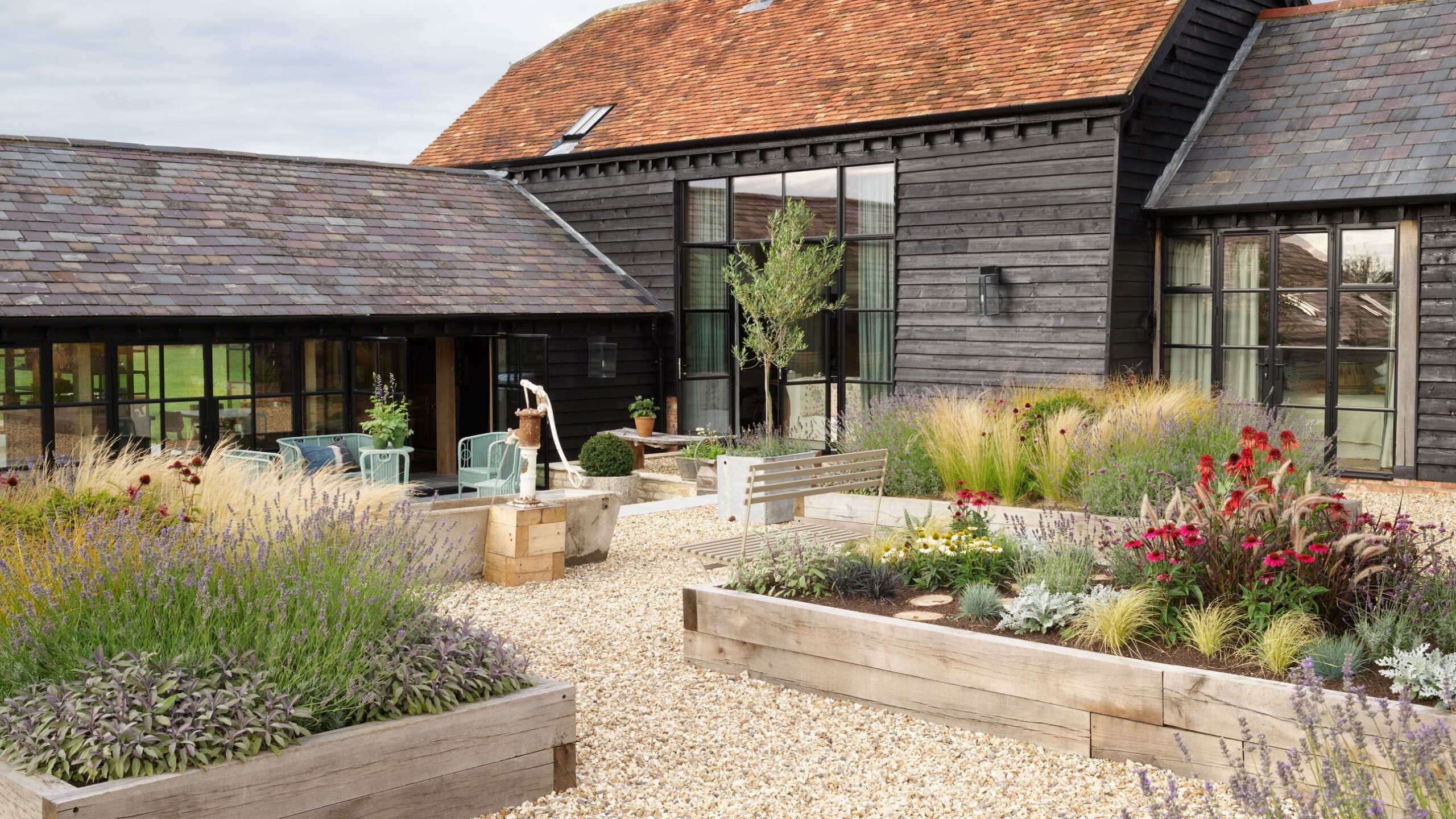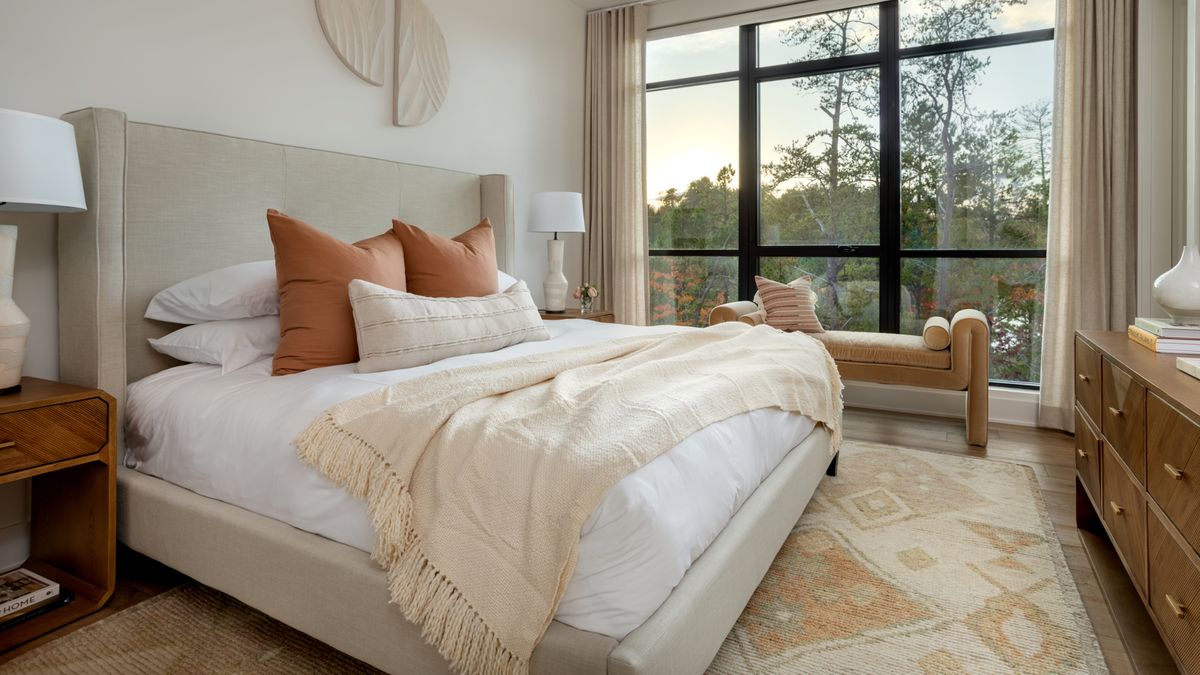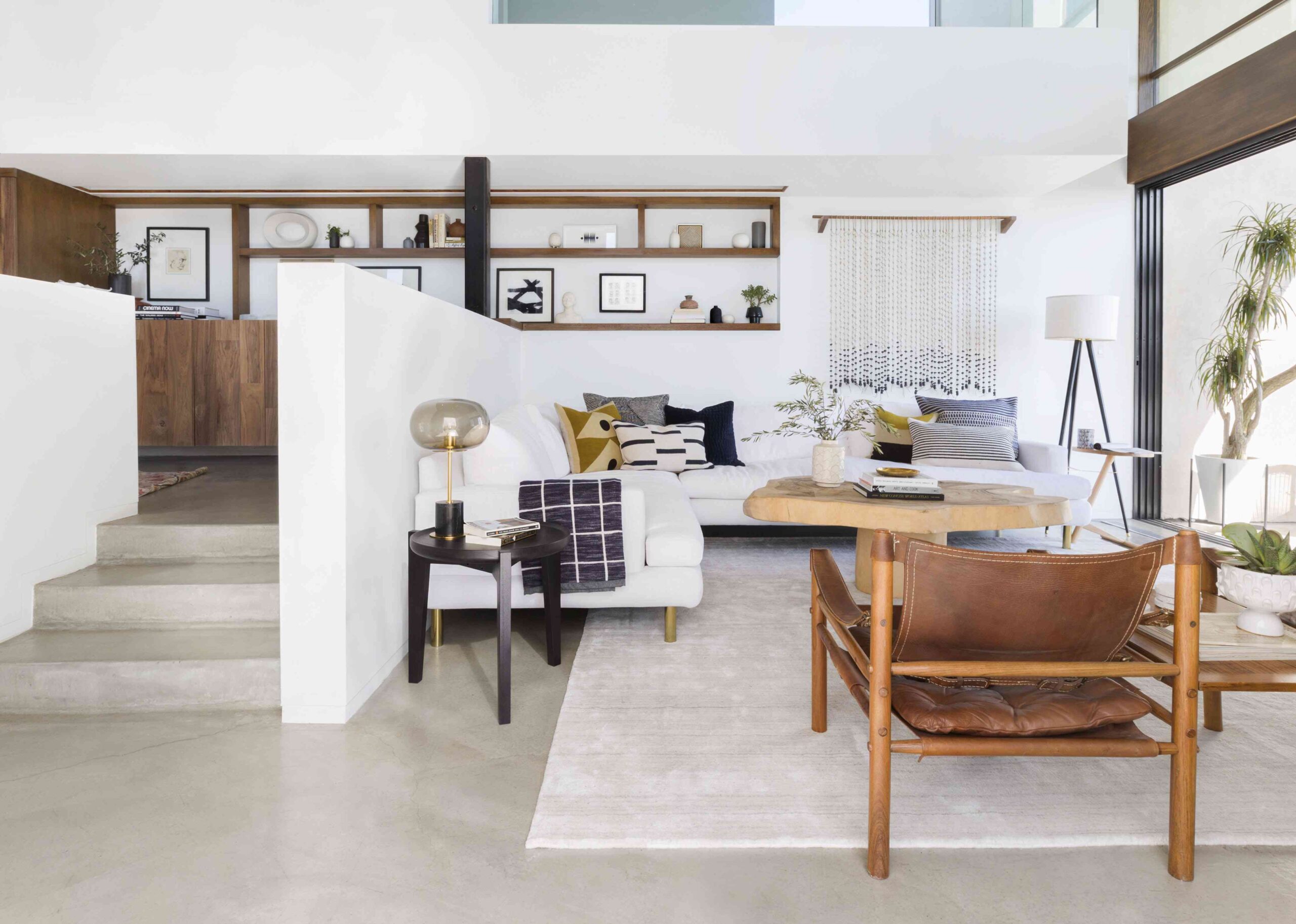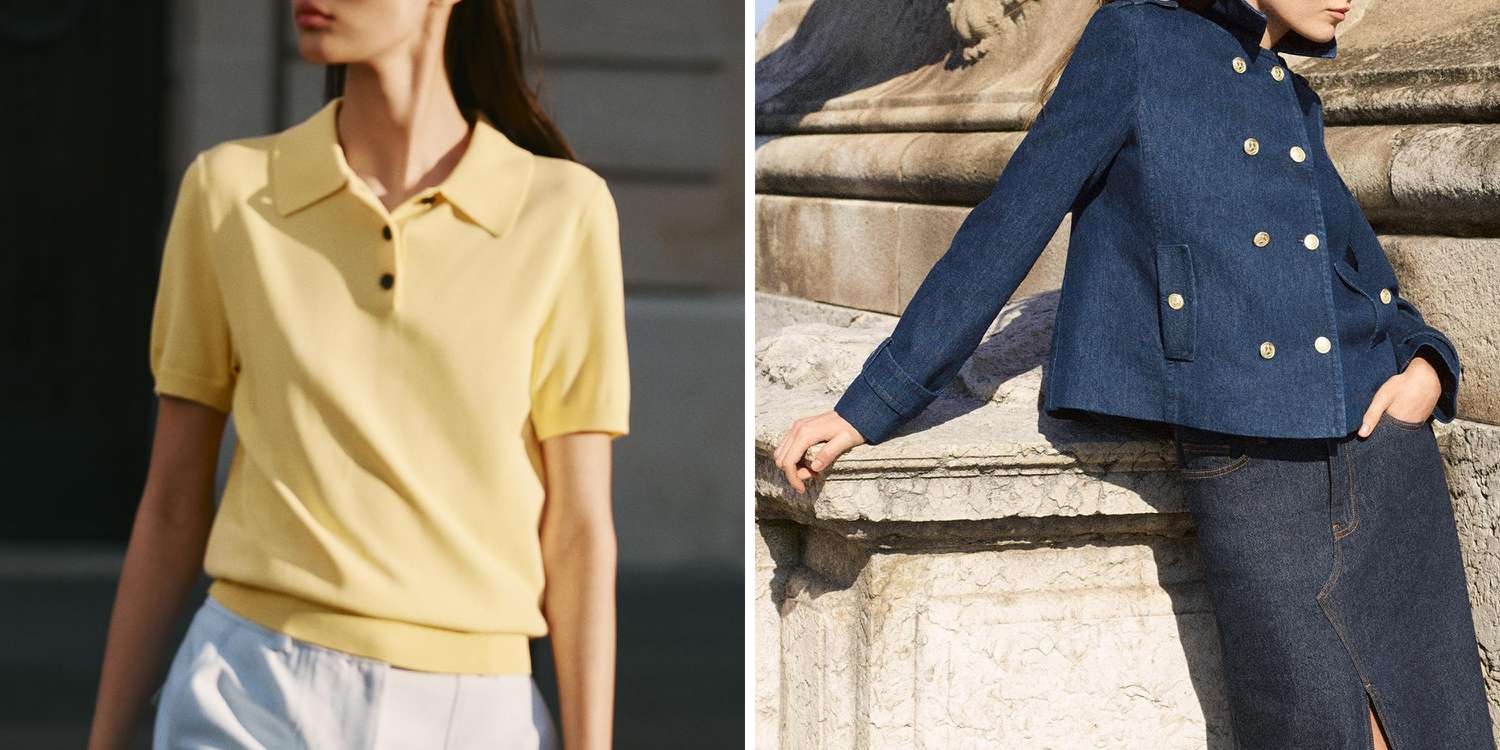
Hubert Zandberg transforms a 19th-century barn with a masterfully restrained palette of materials
Simon Upton
When he was a young man studying law and business at Stellenbosch University, in South Africa, Hubert Zandberg had ambitions to one day work as a cultural attaché. To help pay his way through university, he worked in a before-its-time lifestyle-concept store – doing everything from merchandising to helping clients furnish their homes. And so, eventually, he did what any twenty-something with the drive and easy charm of a diplomat and an instinctive aesthetic sense does: he became an internationally sought-after interior designer, a profession that requires equal and generous amounts of both.
Hubert came to London in the Nineties, landing merchandising jobs at Heal’s and with the late interior designer David Champion, whose shop on Westbourne Grove, W11, was an ever-changing romp around the globe. This was a formative time for Hubert, who would often be tasked with restyling the window displays, drawing in fashionistas and the simply fabulous – from Giorgio Armani to Annie Lennox. When Hubert went on to set up his own interior design studio, he took this experience with him.
The owners of this house are a restaurateur and gallery owner and his environmental philanthropist wife, who have three grown-up daughters. They bought the 19th-century timber barn as a weekend house years ago, by which point it had already been converted into a home fit for modern life. More recently, however, they decided to update some of the original developer’s efforts and they brought Hubert on board to help them achieve this.
The building, set within Buckinghamshire farmland, consists of an old threshing barn and outbuildings, connected and extended to create an L-shape that looks out over a courtyard garden. ‘Structurally, it was good,’ says Hubert. ‘But it was badly detailed.’ The owners wanted to keep the need for planning permission to a minimum, so a local architect helped to pave the way for the replacement of the windows, choosing ones with blackened steel frames that disappear into the dark-stained timber-clad exterior. Inside, new floors were laid, the architectural detailing was rethought and the entire place was refurnished and redecorated.
In one corner of the L-shaped building is a small snug, which leads, on one side, to an enormous sitting room and two bedrooms and, on the other, to a dining area and kitchen, with another bedroom beyond. There is a fourth bedroom on a mezzanine level above the snug.
One of the more impressive spaces is the sitting room, which takes over half of the original barn and is open all the way to the roof space, revealing a wonderfully wonky, scrubbed-oak framework that is combined with pure white walls. Here, as elsewhere in the house, there is a masterfully restrained palette of materials. There is wood, stone, metal and fabrics made from natural fibres. The colours are muted: mostly whites, grey and oatmeal, with a bit of russet and cornflower added as highlights.
Befitting the home of a restaurateur, the kitchen is kitted out to a standard that would allow any professional chef to work with ease, yet it maintains the same earthy characteristics as the rest of the house. Hubert and his team worked with several craftspeople to make the various components, from cabinet fronts and shelving to hinges and handles. A wide, freestanding unit, topped with forged-iron shelving, gives the impression of separation from the dining area without carving up the space into rooms.
Although he cites the likes of Howe London and Max Rollitt as regular sources of furniture for projects, Hubert says that often more than half of the furniture used is custom-made. That includes upholstered pieces as well as reproductions of antiques. In this house, pieces such as the benches serving as a coffee table in the sitting room were inspired by pieces in Hubert’s own collection of antiques but reproduced to a different size.
MAY WE SUGGEST: An 18th-century rectory in Gloucestershire that melds Georgian simplicity with modern style
Also in the sitting room, raw wood shelves are contained within an unfinished iron frame that climbs up one wall. It is another of Hubert’s custom designs and it is something of a signature piece. ‘We unashamedly roll them out,’ he admits. ‘We have them in our office, so clients see them and want them.’ He describes the shelves as having ‘the minimal essence of what a shelf needs to be’. In this case, they are made in unprecious materials to suit the organic nature of the barn and to work with the seemingly casual arrangement of objects they hold.










